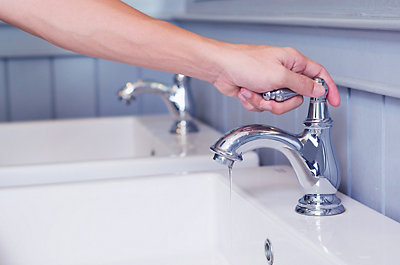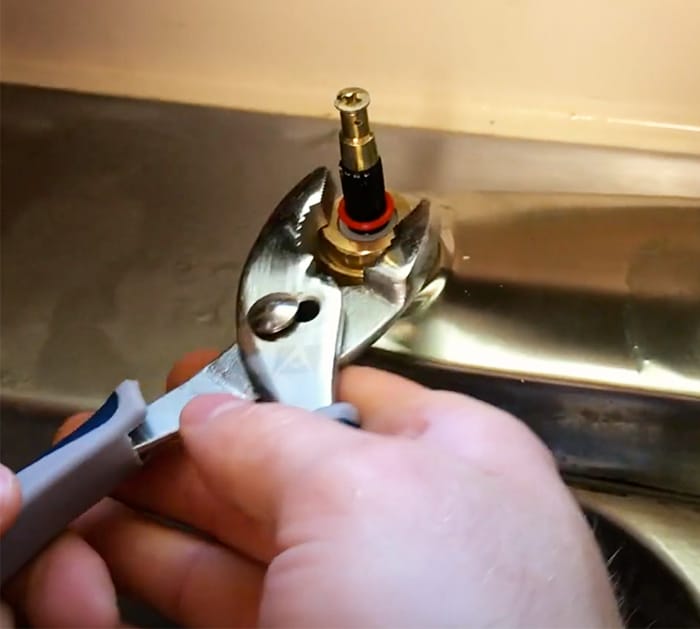Why It's Crucial to Fix a Faulty Faucet
Why It's Crucial to Fix a Faulty Faucet
Blog Article
What're your opinions on Why Are My Faucets Dripping (And Can I Fix It Myself)??

Trickling faucets could feel like a minor trouble, yet their influence surpasses just the nuisance of the noise. From wasting water to incurring unneeded monetary prices and health and wellness risks, neglecting a leaking faucet can bring about various effects. In this post, we'll explore why it's essential to resolve this typical home problem promptly and properly.
Waste of Water
Environmental Impact
Dripping taps add dramatically to water waste. According to the Environmental Protection Agency (EPA), a solitary tap trickling at one drip per second can lose greater than 3,000 gallons of water each year. This not just pressures water resources but likewise affects ecosystems and wildlife depending on them.
Financial Costs
Increased Water Costs
Beyond the ecological impact, trickling faucets can blow up water expenses substantially. The gathered wastage with time translates into greater utility expenses, which can have been prevented with timely repairs.
Potential Home Damage
Furthermore, extended dripping can cause damage to components and surfaces bordering the tap. Water accumulation can trigger discoloration, corrosion, and even structural concerns if left unattended, causing extra fixing prices.
Wellness Problems
Mold And Mildew and Mildew Development
The consistent existence of moisture from a leaking tap produces an excellent atmosphere for mold and mildew growth. These fungis not only jeopardize indoor air top quality however likewise present health risks, specifically for people with respiratory conditions or allergic reactions.
Waterborne Illness
Stationary water in leaking faucets can become a breeding place for microorganisms and other microorganisms, enhancing the danger of waterborne conditions. Pollutants such as Legionella bacteria flourish in stagnant water, potentially bring about serious diseases when consumed or breathed in.
Do it yourself vs. Specialist Fixing
Pros and Cons of DIY Repair Work
While some might attempt to repair a leaking tap themselves, do it yourself fixings feature their very own collection of obstacles. Without proper knowledge and tools, DIY attempts can exacerbate the issue or lead to incomplete repair work, extending the problem.
Benefits of Hiring a Professional Plumber
Hiring a professional plumber makes certain that the underlying source of the trickling faucet is resolved successfully. Plumbings have the competence and tools to identify and fix faucet concerns effectively, conserving time and decreasing the risk of more damages.
Step-by-Step Guide to Repairing a Dripping Faucet
Tools Called for
Before attempting to deal with a dripping tap, gather the essential tools, consisting of a flexible wrench, screwdrivers, substitute components (such as washing machines or cartridges), and plumber's tape.
Usual Tap Issues and Their Solutions
Determine the type of tap and the specific issue causing the drip. Typical issues include damaged washers, rusty valve seats, or faulty O-rings. Refer to maker directions or on the internet tutorials for detailed support on repair services.
Safety nets
Normal Maintenance Tips
To avoid trickling taps, carry out routine upkeep such as cleansing aerators, examining for leakages, and replacing worn-out parts immediately. Additionally, take into consideration setting up water-saving gadgets or upgrading to a lot more reliable components.
Relevance of Prompt Services
Dealing with trickling taps as soon as they're discovered prevents additional water waste and potential damages, eventually conserving both water and cash in the future.
Effect On Residential Or Commercial Property Worth
Assumption of Well-Maintained Home
Keeping a home in good condition, consisting of resolving upkeep concerns like trickling taps, boosts its viewed value and worth among possible customers or tenants.
Influence on Resale Worth
Characteristics with properly maintained plumbing components, consisting of faucets, command higher resale worths in the realty market. Resolving dripping faucets can add to a favorable perception throughout building inspections and arrangements.
Environmental Duty
Individual Contribution to Preservation
Taking duty for taking care of dripping taps lines up with broader initiatives towards water conservation and ecological sustainability. Every individual's activities collectively make a substantial effect on preserving valuable resources.
Sustainable Living Practices
By focusing on punctual repair services and taking on water-saving habits, individuals add to lasting living practices that profit both present and future generations.
Conclusion
Attending to a trickling faucet surpasses simple convenience; it's an essential step towards conserving water, decreasing monetary costs, and guarding health and building. Whether with do it yourself fixings or specialist aid, acting to deal with trickling taps is a little yet impactful method to advertise liable stewardship of sources and add to a much healthier, extra sustainable future.
How to Fix a Dripping or Leaky Faucet
A leaking faucet is one of the most common problems that homeowners encounter, but it being commonplace doesn’t make it any less annoying. The constant drip drip drip of a leaking bathtub faucet, showerhead, or sink tap can disturb your home’s serenity. Left neglected, a dripping faucet can also result in higher water bills and discoloration or mold growth in your sink or plumbing fixtures.
Fortunately, you don’t have to be a trained plumber to know how to stop a dripping faucet. With some basic tools, replacement parts, and a little patience, leaky faucet repair is a breeze. In this article, we’ll explain what causes dripping faucets and how you can fix them.
What Causes a Leaking Faucet?
Kitchen and bathroom faucets come in all manner of designs, but most involve some combination of valves, O-rings, seals, and washers. The O-ring is usually the weakest link, but any one of these pieces can wear down over time. Heat, moisture, temperature fluctuations, minerals, mold, and movement can contribute to warping and corrosion, breaking the watertight seal. This just comes with the territory of being a homeowner. Everything is always subject to wear and tear, and some component parts of your appliances and fixtures need to be replaced on occasion. At least replacement O-rings are cheap!
More rarely, dripping faucets can be a symptom of excessively high water pressure. Were this the case in your home, you would probably notice that the leak is not isolated to one faucet. Water pressure issues are harder to resolve on your own. We recommend contacting a professional plumber if you suspect your water pressure is too high.
How to Fix a Dripping Faucet
Pipe wrench or monkey wrench Allen wrench set Screwdrivers Old towel or rag Shut off the water.
Before you do anything, you need to turn off the water to keep from drenching your kitchen or bathroom. You should find a valve under the sink and against the wall. Once you’ve turned this valve, try turning the faucet on to confirm that the water source has been cut off.
If you can’t locate your local valve for the faucet you’re working on, you can always shut off the water to the house at the main valve. Of course, this will prohibit anyone from using the sinks, showers, or toilets while you’re working on the faucet that’s giving you trouble.
Plug or block the drain.
You’ll be disassembling the faucet and removing some small bits of hardware. Plug the drain with a stopper or rag to avoid the possibility of a small screw falling into your P-trap.
Take apart the faucet assembly.
There are several varieties of kitchen and bathroom faucets, each with its own manner of assembly. For detailed instructions on how to disassemble your faucet, you can refer to the fixture’s manual or contact the manufacturer. If you know whether you have a ball, disc, cartridge, or compression faucet, you can find detailed schematics online.
In general, you need to begin by removing the faucet handles. You might notice a small screw that you’ll need to remove with a screwdriver or Allen wrench. If you don’t see any visible securing hardware, it’s likely hidden under a decorative cap that can be unscrewed or popped off with flathead screwdriver.
Remove each piece methodically, consulting a schematic when necessary. Take notes or arrange the pieces in such a way to make it easier to correctly reassemble the faucet later.
Remove the cartridge.
Once you’ve removed the handles and securing hardware, you should be able to remove the valve cartridge or stem. Some cartridges will slide right out. Other faucet models will require you to loosen a nut with a pipe wrench before you can remove the valve stem.
Examine the exposed hardware.
With the cartridge or stem removed, inspect the component parts. Check the rubber O-rings for wear and tear. Also examine the seat washer for corrosion or other damage. These pieces are usually the responsible parties for a dripping faucet, but it’s worth inspecting the other component parts while you have the faucet disassembled.
Find replacement parts.
Once you’ve identified which faucet component has failed, find an identical replacement. Your local hardware store should have O-rings, seat washers, and other standard components in stock. If you have a luxury or uncommon faucet, you may have to contact the manufacturer for a replacement part.
It’s a good idea to take your old parts with you to the hardware store so you can compare them with the store’s inventory and be sure you’re purchasing the correct replacement.
Reassemble the faucet.
With your new parts in hand, reconstruct the faucet and handles. Don’t be tempted to overtighten screws or nuts. You might think this could create a better seal, but it can instead damage or bend a delicate part of the assembly and create a new problem for you.
Turn on the water and test the faucet.
The only thing left to do is test your work. Unplug the sink, turn the water back on, and try the faucet. Congratulate yourself on a job well done!
https://www.libertyhomeguard.com/how-to-fix-a-dripping-or-leaky-faucet/

As a serious person who reads on What Causes Leaky Faucets & How To Fix Them, I figured sharing that topic was beneficial. Sharing is nice. You won't know, you could be doing someone a favor. Thanks for taking the time to read it.
Report this page